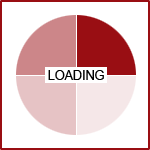Local Law 31 vs. Local Law 33: What NYC Property Owners Need to Know in 2025
Between Local Law 31 and Local Law 33, NYC property owners are juggling serious responsibilities when it comes to lead paint inspections. And in 2025, enforcement isn’t slowing down. So what’s the difference between these two laws? Which deadlines matter most? And how do you stay compliant without losing sleep (or tenants)? Let’s break it down — from the lead experts at UNYSE.
First Up: What is Local Law 31?
Local Law 31 (passed in 2020) requires that lead paint inspections be completed using XRF technology (we’ll get to that) in NYC residential buildings built before 1960 — or between 1960–1978 if lead-based paint is known.
Key Requirements:
-
Full XRF lead inspections must be done in every dwelling unit by August 2025
-
Buildings with children under 6 must already comply
-
Inspections must be performed by EPA-certified firms or risk fines
Local Law 31 is about identifying the hazard before it becomes a problem.
And What About Local Law 33?
Local Law 33 complements LL31 by focusing on disclosure and recordkeeping. It mandates that landlords and building owners:
-
Maintain records of all lead paint inspections and remediations
-
Disclose lead paint conditions to tenants
-
Post annual notices about lead-based paint risks
-
Submit documentation to HPD or DOH upon request
So while LL31 tells you what to inspect, LL33 tells you how to prove it.
2025 Deadlines to Know
August 2025 – All XRF inspections under LL31 must be completed for buildings constructed pre-1960
Ongoing – Annual notice requirements and documentation tracking under LL33 remain in effect
Immediately – If children under 6 reside in any unit, lead inspection must happen now
XRF Inspections: The Only Way to Comply
If you’re still using old-school testing kits or visual assessments — forget it. NYC law now requires XRF (X-ray fluorescence) technology for accurate, verifiable lead inspections.
Why XRF?
-
Fast — full-unit inspections can be done in under an hour
-
Non-invasive — no paint removal or lab processing
-
Reliable — trusted by EPA, HUD, and NYC law
-
Legally required under Local Law 31
UNYSE’s team of certified professionals uses state-of-the-art XRF devices to inspect every surface where lead might be hiding — walls, windows, doors, trim, baseboards, and more.
What Happens If You Don’t Comply?
Don’t risk it — NYC isn’t messing around. If your building falls under LL31/33 and you fail to comply, here’s what you’re facing:
-
Fines up to $10,000 per unit
-
Denial of permits and violations issued
-
Tenant lawsuits or rent withholdings
-
Loss of value and potential for city intervention
And once you’re flagged, future inspections become mandatory, even if you’ve corrected the issue.
UNYSE’s Role: Why Experience Matters in 2025
With nearly three decades of experience, UNYSE has become NYC’s go-to partner for navigating lead laws — especially with complex city, state, and federal overlap.
Here’s what we bring to the table:
-
EPA-certified inspectors
-
Fully compliant XRF inspections
-
Clear documentation for LL31/LL33
-
Project tracking and follow-up support
-
Quick turnaround on clearance exams and final reports
We help property owners, schools, and contractors breathe easy knowing they’re fully compliant — and ahead of the curve.
Who Needs to Take Action?
If you’re any of the following and manage buildings constructed before 1960 (or up to 1978 with known lead), you need to act now:
-
Landlords
-
Property managers
-
Schools & daycare facilities
-
Developers & rehab contractors
-
Agencies and housing authorities
The closer we get to August 2025, the tighter schedules will become — and the harder it’ll be to book inspections in time.
Compliance Made Simple with UNYSE
We’ve streamlined the process so you don’t have to scramble. Here's what it looks like when you work with us:
-
Schedule your XRF inspection
-
We perform a comprehensive room-by-room scan
-
You receive digital reports and compliance documents
-
Need a clearance exam? We handle that too
-
We remind you of future deadlines and disclosures — no stress
Final Word: 2025 Is Closer Than You Think
The countdown to August 2025 is ticking — and NYC won’t be granting extensions. If you own or manage pre-1960 buildings, now is the time to schedule inspections, get your documentation in order, and partner with experts who’ve been doing this since the 1990s.
UNYSE is here to guide you every step of the way. We don’t just check the boxes — we protect your buildings, your tenants, and your peace of mind.
FAQs
Q: Can I do a visual inspection instead of XRF?
Nope. NYC Local Law 31 requires XRF inspections — visual checks are not compliant.
Q: What buildings are affected?
Any residential building built before 1960, or between 1960–1978 with known lead paint.
Q: What if I already had lead remediation done?
You still need to provide XRF inspection documentation and maintain records under Local Law 33.
Q: Does UNYSE also do abatement?
No — we specialize in testing, analysis, and clearance exams only. No conflict of interest, ever.
Helpful Resources

